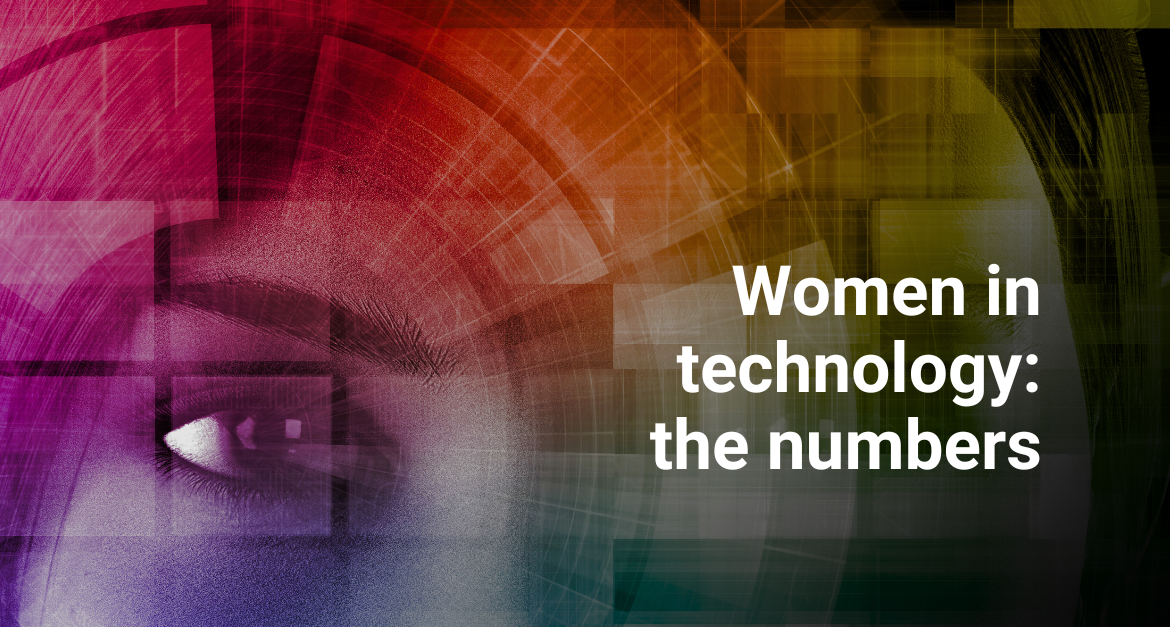It’s no secret that there is a gender gap in tech. Women are still underrepresented, underpaid, and often discriminated against in the tech industry, the statistics show.
According to Forbes, women currently hold only 26.7% of tech-related jobs and technology firms with more than 10,000 employees report women’s representation at 26.2%. This means, as an industry, we are far from representing the societies we serve.
An article in cio.com shows that women are not only underrepresented in tech, they are also underpaid, with the report saying that women earn $15,000 less than men, with an average annual salary of $60,828 per year compared to $85,000 for men. The gap grows even wider for Latina and Black women, who earn an average annual salary of $52,000 in the industry, according to the article.
Looking specifically at the cybersecurity sector, zippia.com says that 83.2% of US cyber security specialists are male and only 16.8% are female, and women working as cyber security specialists earn 95c for every $1 earned by men.
Trending up: Women in Cybersecurity
According to the Cybersecurity Ventures Women in Cybersecurity Report, there is some good news. In 2022, Women held 25 percent of cybersecurity jobs globally, up from 20 percent in 2019 and around 10 percent in 2013. Cybersecurity Ventures predicts that women will represent 30 percent of the global cybersecurity workforce by 2025, increasing to 35 percent by 2031.
Women are leaving tech
However, that still leaves us with a huge gap to close, not helped by the fact that more than half of women in tech leave the industry by the mid-point of their career, (according to Techrepublic) – more than double the rate of men. The reasons given include weak management support (23%), lack of opportunity (20%), and lack of work-life balance (22%). The study from the Women in Tech Network also noted that women are 1.6 times more likely to be laid off than men. In the mass tech layoffs of 2022, 69% of those who were let go were women.
Women, leadership and tech
The tech industry has been a predominantly male-led industry for decades, which in turn can affect women’s ability to succeed in the sector, fostering “unconscious gender bias in company culture,” and leaving many women “without a clear path forward,” according to a report from TrustRadius quoted by cio.com. The report found that 72% of women in tech say they are outnumbered by men in business meetings by a ratio of at least 2:1, while 26% report being outnumbered by 5:1 or more.
Cybersecurity Ventures also points to how the lack of gender diversity is at its most obvious when we look at who holds the top roles in cybersecurity, with women only holding 17 percent of chief information security officer (CISO) roles at Fortune 500 companies, in other words only 85 of 500 available CISO positions.
A 2022 report from McKinsey shows that women also face more barriers to promotion and career growth, finding that only 86 women are promoted to manager for every 100 men across every industry. However, for tech, that number drops to 52 women for every 100 men. Women who work in more inclusive environments are 61% more likely to advance to management level, while that number jumps to 77% for women of colour, according to data from Accenture.
Workplace culture
It’s one thing to recruit women for IT roles, but organizations must be inclusive if women are to stay. Workplace culture also plays a role in women’s uphill battle in IT, says CIO.com. The article quotes a Pew Research Center report showing that 50% of women said they had experienced gender discrimination at work, while only 19% of men said the same. The numbers were even higher for women with a postgraduate degree (62%), working in computer jobs (74%), or in male-dominated workplaces (78%). When asked whether their gender made it harder to succeed at work, 20% of women said yes and 36% said sexual harassment is a problem in their workplace.
Why is this lack of gender diversity a problem?
When employees “think their organisation is committed to and supportive of diversity, and they feel included”, innovation revenue increases by 83% says Deloitte. Companies in the top quartile for gender diversity are 15% more likely to outperform competitors, according to McKinsey.
An inclusive organisation is 2x as likely to exceed financial targets, 3x as likely to be high-performing, 6x more likely to be agile and innovative, and 8x more likely to achieve better business outcomes, the Deloitte report says.
Is education the answer?
Cybersecurity, and the technology sector in general, have a long way to go before they can benefit from a more equitable gender mix. Without expecting a silver bullet, education would seem an obvious place to start addressing the problem.
Data from the US Bureau of Labor Statistics shows that STEM occupations have grown 79% over the past three decades and are projected to increase another 11% by 2030. But women still account for only 18% of new computer science degrees, while Black and Hispanic women account for only 6% of degrees, according to data from Women in Tech Network.
Data from Accenture show that as of 2022, women have a higher dropout rate of 37% for tech classes compared to just 30% for other programs. When it comes to advanced degrees, only 30% of master’s degrees in engineering and computer sciences are awarded to women, dropping to 24% for doctoral degrees, according to the Society of Women Engineers. Without diversity, inclusion and equity in our university STEM degree programs, gender diversity in the tech industry will continue to be a challenge.
The Red Education Women in Cybersecurity Training Scholarship
While understanding that it is just a drop in the ocean, Red Education launched its Women in Cybersecurity Training Scholarship in 2024.
These new training scholarships aim to bring more women into the cybersecurity sector, both through the scholarships themselves and the awareness they can create.
The Red Education Women in Cybersecurity Scholarships 2024 will offer four scholarships – two at RLP US$5000 each for Palo Alto Networks: EDU-210, two at RLP US$3250 each for Check Point Certified Security Administrator), open to females studying or in the early stages of their careers in IT.
This scholarship will be offered as part of Red Education’s Corporate Social Responsibility program. Applications are open from 1 April to 30 June 2024. Learn more here.




